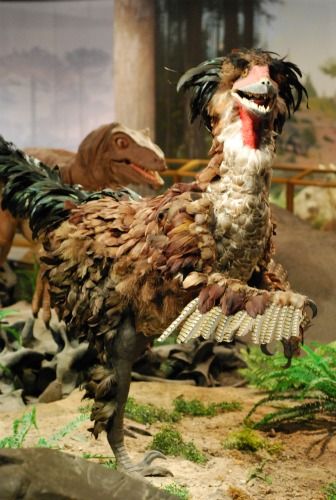Las Vegas’ Truly Terrible Dinosaurs
/https://tf-cmsv2-smithsonianmag-media.s3.amazonaws.com/filer/20120328092013tyrannosaurus-head-thumb.jpg)
Las Vegas, Nevada, is not a city I immediately associate with dinosaurs. To judge by the billboards along Interstate 15 approaching town, slot machines, strip clubs and performances by has-been comedians is what the town is all about. But, strange as it may seem, Las Vegas has a natural history museum, and the small building is home to some of the worst dinosaurs I have ever seen.
In execution, the Las Vegas Natural History Museum feels less like a true museum and more like a curiosity cabinet cobbled together out of taxidermy mounts and anthropological items. A lion pouncing on a bucking wildebeest greets patrons along the main corridor, and a glass case shows off a collection of African ceremonial masks without providing any cultural context for the items. Splintering whale bones and life-size shark models decorate the nearby marine life gallery, and despite the fact that Las Vegas has no immediate connection to human origins, a gallery downstairs presents a series of disturbingly inaccurate early human mannequins. “Lucy” certainly deserves better. But I wasn’t there for the trophy room of stuffed mammals or the Egyptian tomb exhibit. I had come for the dinosaurs.

The first thing I saw upon walking into the Engelstad Family Prehistoric Life Gallery was an utterly atrocious Deinonychus. Plastered with feathers, the sickle-clawed predator looked as if it had been tarred and feathered for some Early Cretaceous offense. While I have repeatedly griped that there are too many naked dinosaurs in books, movies and museum displays, this poor creature made me reconsider my insistence on this point. No wonder some people feel that feathered dinosaurs look stupid—when restored without careful reference to living birds, some downy deinonychosaurs really do strain our love for dinosaurs.
A few other creatures, such as our sail-backed cousin Dimetrodon and a model of the extinct whale Zygorhiza, inhabit the hall, but the dinosaurs are given top billing. Almost all are sculptures or animatronics. A brown, dopey-looking Herrerasaurus squats in the corner of one exhibit, sharing little resemblance with the actual predatory dinosaur, and visitors can push a button to make a seafoam green Allosaurus bellow ineffectually. Nearby, a small pack of Troodon pose to chase away a nest-raiding mammal, and while I was disappointed that these dinosaurs were not feathery, a look back at the dreadful Deinonychus made me feel that it may have been best to leave these dinosaurs without plumage. The grand centerpiece is a diorama of that most famous face-off: Triceratops versus Tyrannosaurus. The ornery horned dinosaur constantly jerked and snorted, and the Tyrannosaurus—a recent recipient of some mechanical surgery based on the square cut in its right side—was poised to charge.
I couldn’t figure out what the point of the exhibit was. The displays provided a minimum of educational tidbits, such as the difference between “bird-hipped” and “lizard-hipped” dinosaurs, but I did not see any of the visitors look at the other panels. The monstrous dinosaurs seemed to speak for themselves, at least with the help of pushbutton snarls. Fossils were almost absent from the hall. A few isolated dinosaur track slabs were scattered through the hall, and a small glass case contained a single vertebra from Camarasaurus, but that was nearly all. (There is another display about dinosaur eggs, but that part of the room was so dimly lit that I couldn’t read the explanatory panels or see the eggs.) Another exhibit, about Nevada’s changing landscape, noted that the time of the dinosaurs is poorly known in Nevada, and the prehistoric hall is certainly a testament to that.
There’s more than one way to display dinosaurs. Not every museum has to be Smithsonian’s National Museum of Natural History or the American Museum of Natural History. There are so many stories to tell about dinosaurs lives—how they grew, ate, fought, reproduced and more—that small, regional museums have ample opportunity to show off aspects of dinosaur biology that might get missed in the famous fossil halls of bigger, older institutions. And local museums can play an important role in displaying pieces of local geologic history that may be hidden in collections elsewhere. But the Las Vegas Natural History Museum’s paleontology hall feels more like a tourist trap, populated by low-grade dinosaurs presented without any unifying story or aim. Dinosaurs have much to tell us about evolution, extinction and past worlds, and it is a shame to see them treated as mere monsters made to roar on command.
/https://tf-cmsv2-smithsonianmag-media.s3.amazonaws.com/accounts/headshot/RileyBlack.png)
/https://tf-cmsv2-smithsonianmag-media.s3.amazonaws.com/accounts/headshot/RileyBlack.png)